Filter by

A Bibliography of the Writings of Dr William Harvey: 1578–1657
First published in 1953, as the second edition of a 1928 original, this book supplies a detailed bibliography of Dr William Harvey, who described the workings of the circulatory system in his revolutionary 1628 treatise, De Motu Cordis. Keynes notes the various editions and translations of Harvey's three key works as well as miscellaneous writings and anthologies and their locations in librarie…
- Edition
- -
- ISBN/ISSN
- 9781316529959
- Collation
- -
- Series Title
- -
- Call Number
- -

The Vienna Circle Studies in the Origins, Development, and Influence of Logi…
This abridged and revised edition of the original book (Springer-Wien-New York: 2001) offers the only comprehensive history and documentation of the Vienna Circle based on new sources with an innovative historiographical approach to the study of science. With reference to previously unpublished archival material and more recent literature, it refutes a number of widespread clichés about "neo-p…
- Edition
- -
- ISBN/ISSN
- 978-3-319-16561-5
- Collation
- -
- Series Title
- -
- Call Number
- -

The Synthetic Nitrogen Industry in World War I Its Emergence and Expansion
This concise brief describes how the demands of World War I, often referred to as the Chemists’ War, led to the rapid emergence of a new key industry based on fixation of atmospheric nitrogen. Then, as now, nitrogen products, including nitric acid, and nitrates, were essential for both fertilizers and in the manufacture of modern explosives. During the first decade of the twentieth century, t…
- Edition
- -
- ISBN/ISSN
- 978-3-319-19357-1
- Collation
- -
- Series Title
- -
- Call Number
- -
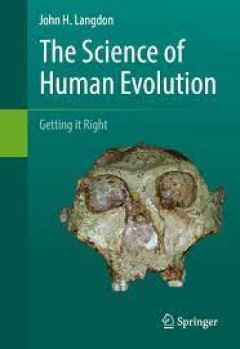
The Science of Human Evolution Getting it Right
This textbook provides a collection of case studies in paleoanthropology demonstrating the method and limitations of science. These cases introduce the reader to various problems and illustrate how they have been addressed historically. The various topics selected represent important corrections in the field, some critical breakthroughs, models of good reasoning and experimental design, and im…
- Edition
- -
- ISBN/ISSN
- 978-3-319-41585-7
- Collation
- -
- Series Title
- -
- Call Number
- -
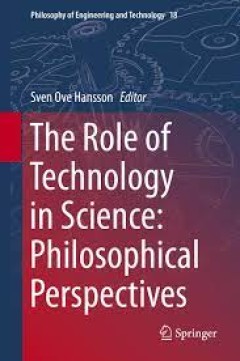
The Role of Technology in Science: Philosophical Perspectives
This edited volume explores the interplay between philosophies in a wide-ranging analysis of how technological applications in science inform our systems of thought. Beginning with a historical background, the volume moves on to explore a host of topics, such as the uses of technology in scientific observations and experiments, the salient relationship between technology and mechanistic notions…
- Edition
- -
- ISBN/ISSN
- 978-94-017-9762-7
- Collation
- -
- Series Title
- -
- Call Number
- -
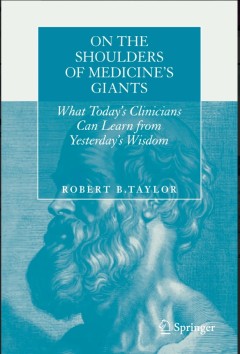
On the Shoulders of Medicine's Giants
Medical history offers us many wise thoughts, a few misguided notions, and a host of intriguing back-stories. On the Shoulders of Medicine’s Giants presents a selection of these, and tells how the words of medicine’s “giants”—such as Hippocrates, Sir William Osler, Francis Weld Peabody, and Elizabeth Kübler-Ross—are relevant to medical science and practice in the 21st century. Whi…
- Edition
- 1
- ISBN/ISSN
- 978-1-4939-1334-3
- Collation
- XIV, 251
- Series Title
- -
- Call Number
- -
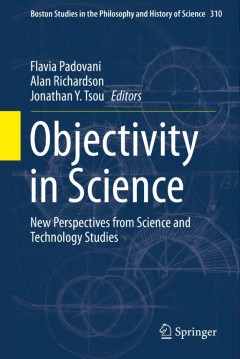
Objectivity in Science
This highly multidisciplinary collection discusses an increasingly important topic among scholars in science and technology studies: objectivity in science. It features eleven essays on scientific objectivity from a variety of perspectives, including philosophy of science, history of science, and feminist philosophy. Topics addressed in the book include the nature and value of scientific object…
- Edition
- 1
- ISBN/ISSN
- 978-3-319-14348-4
- Collation
- VI, 226
- Series Title
- Boston Studies in the Philosophy and History of Science
- Call Number
- -

The Perfect Shape: Spiral Stories
This book uses the spiral shape as a key to a multitude of strange and seemingly disparate stories about art, nature, science, mathematics, and the human endeavour. In a way, the book is itself organized as a spiral, with almost disconnected chapters circling around and closing in on the common theme. A particular strength of the book is its extremely cross-disciplinary nature - everything is f…
- Edition
- -
- ISBN/ISSN
- 978-3-319-47373-4
- Collation
- XI, 258
- Series Title
- -
- Call Number
- -
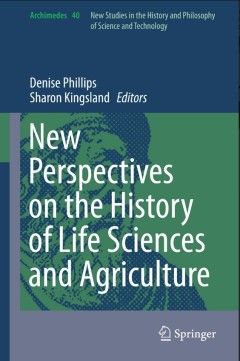
New Perspectives on the History of Life Sciences and Agriculture
This volume explores problems in the history of science at the intersection of life sciences and agriculture, from the mid-eighteenth to the mid-twentieth century. Taking a comparative national perspective, the book examines agricultural practices in a broad sense, including the practices and disciplines devoted to land management, forestry, soil science, and the improvement and management of c…
- Edition
- 1
- ISBN/ISSN
- 1385-0180
- Collation
- VII, 509
- Series Title
- Archimedes
- Call Number
- -

G.W. Leibniz, Interrelations between Mathematics and Philosophy
Up to now there have been scarcely any publications on Leibniz dedicated to investigating the interrelations between philosophy and mathematics in his thought. In part this is due to the previously restricted textual basis of editions such as those produced by Gerhardt. Through recent volumes of the scientific letters and mathematical papers series of the Academy Edition scholars have obtained …
- Edition
- -
- ISBN/ISSN
- 978-94-017-9664-4
- Collation
- -
- Series Title
- -
- Call Number
- -
 Computer Science, Information & General Works
Computer Science, Information & General Works  Philosophy & Psychology
Philosophy & Psychology  Religion
Religion  Social Sciences
Social Sciences  Language
Language  Pure Science
Pure Science  Applied Sciences
Applied Sciences  Art & Recreation
Art & Recreation  Literature
Literature  History & Geography
History & Geography